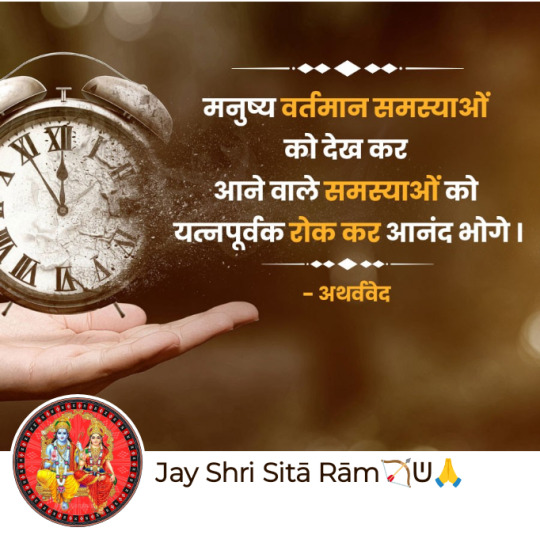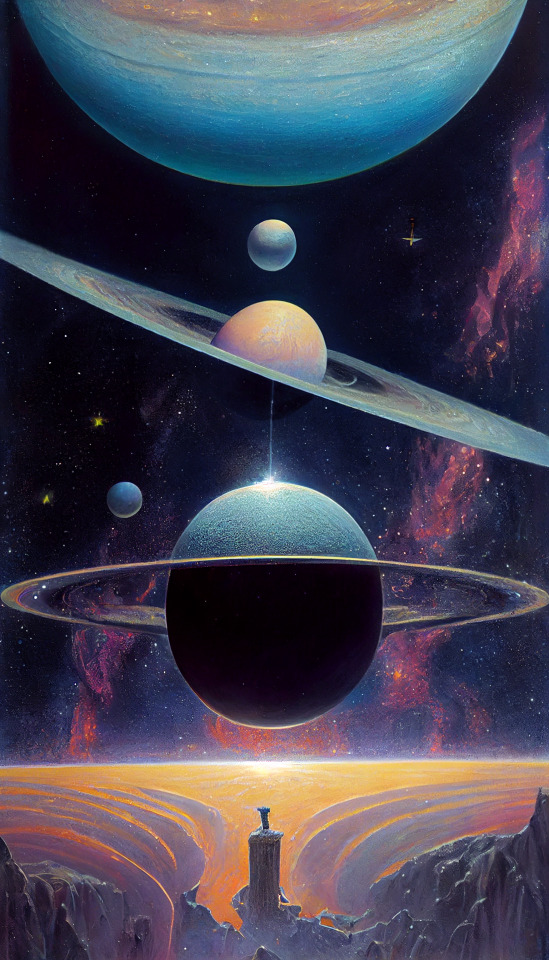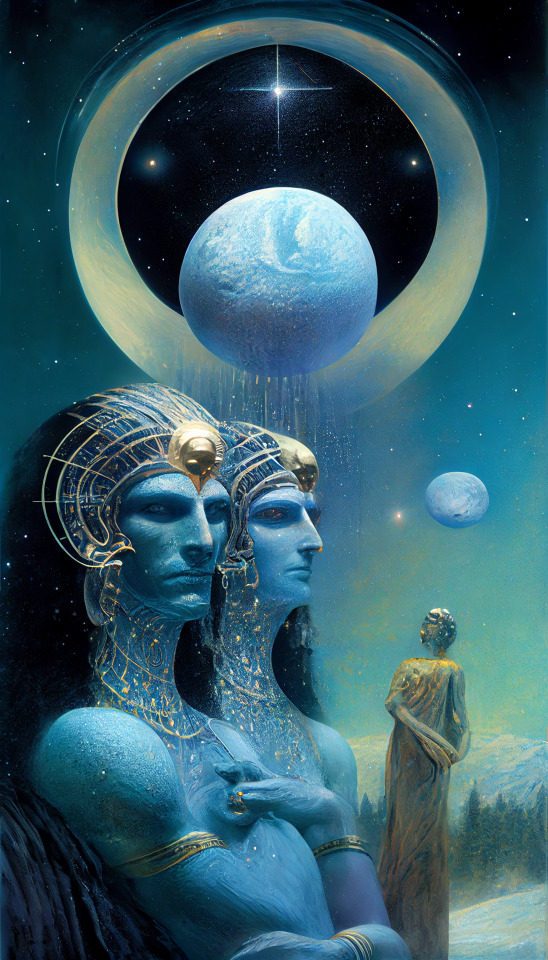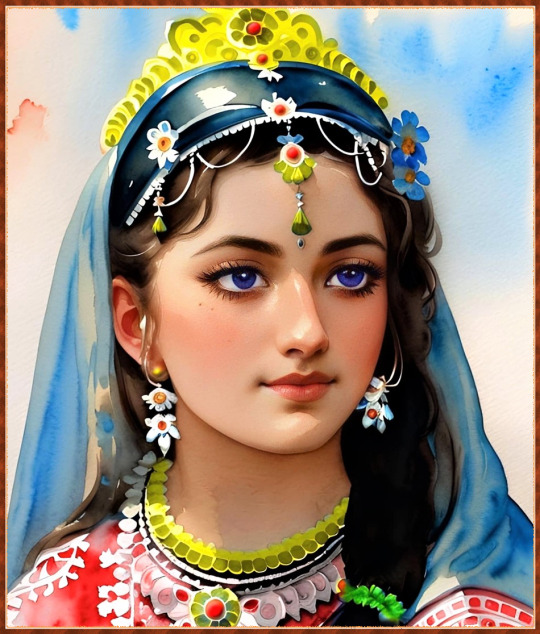#atharva veda
Text

जय श्री सीताराम🏹ᕫ🙏अथर्ववेद📖...✍️
2 notes
·
View notes
Text
India’s Vedic Sanskrit Upanishads: Foundation of Religions and Karma! | Ancient Origins
https://www.ancient-origins.net/news-history-archaeology/upanishads-0016125
View On WordPress
#1st millennium BC#8th century AD#Aitareya#Ajivikas#Aranyaka#Aranyakas#Aruni#Atharva Veda#Atman#Bâlâki#Brahman#Brahmana#Brhadāranyaka#Buddhism#Buddhist#Chāndogya#Hanuman#Hinduism#India#Indian Subcontinent#Isa#Islam#Jainism#Kaivalya#Karma#Katha#Kauṣītakī#Kena#Maitrī#Monkey God
0 notes
Text
Rigveda | Sukta 1 & 2 | ऋग्वेद | सूक्त १ और २
youtube
1 note
·
View note
Text
Ayurveda - The Science of Life
Ayurveda is not just a mere medical practice, but a way of life. It forms the crux of the Indian wellness system and is renowned as the world's oldest medical science.
Ayurveda is not just a mere medical practice, but a way of life. It forms the crux of the Indian wellness system and is renowned as the world’s oldest medical science. Ayurveda originates from the Indian subcontinent and is created on the fundamental principle of living according to the rhythms of nature. Ayurveda is a treasure trove of holistic knowledge that has been passed on from one…

View On WordPress
#Atharva Veda#ayurveda#Holistic Haelth#Michelle Berry#Michelle Berry Bliss#Natural Living#Science of Life
0 notes
Text
10 facts about Saturn in Astrology
Sometimes you wonder why your life is so difficult when you seem to be doing everything properly. This is what the planet Saturn is supposed to do for you. It deals with discipline, challenges, delays, obligations, dealings, and occasionally denials.
It wants you to put in a lot of effort, work hard, and learn from your mistakes so that when you do experience success, it can still keep you grounded and modest despite your abundance of knowledge. As a result, Saturn is a stern instructor who is austere but just for the sake of the pupil.
In terms of astrology, Saturn is associated with discipline, karma, hardwork, patience, time management, and meeting deadlines while keeping the constraints in mind. Saturn, however, couldn't be categorised as a bad planet because of the way it can turn rags into gold.
But, it requires you to be brave even under the most trying circumstances. In Vedic astrology, Saturn is also associated with the aged, with the grace of old age, with traditions, with established ways of doing things, and with authority. It rewards you for tenacity and penalises you for impatience and shortcuts.
Saturn Astronomical Information
The Sun is the largest planet in the solar system, with Saturn coming in second. 1.35 billion kilometres separate this ringed planet from the sun (closest distance). It rotates once every 10 hours and 40 minutes and takes approximately 29.5 years to complete one revolution around the sun.
Saturn has 62 satellites, similar to how Earth has the Moon as its satellite. Moreover, it makes an annual appearance in retrograde for about 135 days.
Saturn travels through the zodiac in around 30 years and spends about 2.5 years in each sign.
Essential Details about Saturn Transit in each sign 2.5 years
Direction West
Metal Iron
Gem Blue Sapphire
Day Saturday
Color Blue
Temperament Strict, Sorrowful
Gender Male
Ruling Body Part Legs, nervous system, chronic diseases
Status in Imperial Stars Advisor
Friends Mercury, Venus
Enemies Sun, Moon, Mars
Neutral Jupiter
Own Sign Capricorn, Aquarius
Exalted in Libra
Debilitated in Aries
Mool Trikon Aquarius
Mahadasha Period 19 Years
Relation Servants and Elderly People
Professions Mining, labor, oil, petroleum, agriculture, freezing, coal, leather goods, butchery, lead, blue sapphire.
Significance of Saturn in Vedic astrology
As a result of our past life karma, Saturn places restrictions and pain on us. By doing this, it enables us to identify our flaws and shortcomings, make adjustments, and finally accept responsibility.
According to Vedic astrology, the region of life where a person may struggle is determined by where Saturn is positioned in the horoscope. Yet, the strength of the sign in the horoscope indicates whether the individual will be resilient enough to face challenges or prone to breakdowns.
Strong Saturns in the horoscope are typically hard workers who may labour nonstop to achieve their objectives. Also, these people have a stronger feeling of duty and loyalty. They take a structured approach to life, are rather sombre, and are rigorous by nature.
When Saturn is afflicted, it indicates that person's inability to handle problems in life. Such people's escapist inclinations make matters worse because Saturn wants you to work hard.
In rare situations, a weak Saturn in the horoscope can result in mental anguish, aloofness in personality, addictions, and even chronic illnesses. If you give up and succumb to shortcuts to avoid suffering, problems could get worse.
The greatest solution is to lead a disciplined lifestyle and put in a lot of effort, which will eventually lead to purification and the pursuit of one's true self. The consequences of a Saturn affliction last for a very long time because Saturn is a sluggish planet. Once the moment of tenacity and laboriousness is over, there there will be rewards both in spiritual as well as other sense.
Top 10 Saturn Facts
As well as being a beauty, the ringed wonder is also a fascinating world.
Saturn has 62 confirmed moons.
The planet is tilted on its axis by 26.7° and therefore has seasons. Each lasts just over seven years because Saturn takes 29.45 years to orbit the Sun.
Saturn is a gas giant planet; it is mainly made up of hydrogen and helium. It's thought that a rocky core exists at its centre.
On average, Saturn is 9.5 times farther from the Sun than Earth is.
Each day on Saturn is only 10.55 hours long. This means that there are 24,470 Saturnian days in one Saturnian year — that's a lot of sunrises and sunsets!
Saturn is slightly flattened: its equatorial diameter is 120,536km while its polar diameter is 108,728km. You could fit 9.5 Earths across its disc.
The ring system out to the A ring is 273,550km wide, but only 1km thick.
Saturn is a windy planet, with gusts measured by Voyager at 1,800km/h.
Titan, Saturn's largest moon, has a nitrogen atmosphere and liquid lakes of methane on its surface.
Roughly every 30 years, a great white storm appears in Saturn's northern hemisphere.
#astrology#vastu#vedic astrology#vastu shastra expert#vaastu#astro notes#aries astrology#astro placements#predictive astrology#astro posts#astro community#astro chart#vedas#vedanta#rigveda#yajurveda#rg veda#hindu vedas#atharva-veda#Vedic Jyotish Online#vedic astro observations#astrology numerology vedicastrology#astrology numerology vedicastrology#vedic chart#vedic astro notes#vedic#hindu mythology#hinduism#hindu astrology#hindu vedic
42 notes
·
View notes
Text
#Atharvaveda #Atharva #veda #upanishad #upanishads #invocation #peace #chant #hinduismbook #munindramisra
ATHARVA VEDA: Upanishad Invocation & Peace Chant https://www.youtube.com/watch?v=jJIqhaspgH4
youtube
#hinduism#munindra#english#rhyme#sanatan#dharma#munindramisra#books#upanishad#hinduismbook#atharvaveda#veda#atharva#Youtube
0 notes
Text
Le meto la mano a sexy colegiala nalgona
Happy Birthday sexually whit her dog
Lucy Doll In Super Small Step Sis Gets Destroyed
Astonishing gal gets juicy sissy fucked
Dads slamming their teens wet coochies making them scream in delight
indian cum so fast
AWESOME AMATEUR TEEN BLONDE TOYING PUSSY
Me chupo toda la verga al vecino mientras mi novio ve
Avy Scott Gets Nailed
La serveuse se fait baiser pendant sa pause [Full Video]
#Juturna#Sulligent#Coronus#Persianization#noyades#unrepetitively#well-pondered#adenographer#Atharva-Veda#strany#rush-margined#Wausa#clansman#meritorious#efform#ventilative#tysonite#dithioic#Childermas#clerestoried
1 note
·
View note
Text




Whate'er exists in heaven and earth, whate'er beyond the skies,
Before the eyes of Varuna, the king, unfolded lies.
Atharva Veda
Ouranos
Talon Abraxas
46 notes
·
View notes
Text

जय श्री सीताराम🏹🙏अथर्वदेव....📖
3 notes
·
View notes
Text

☀ SHRI RADHA ☀
“The maha-mantra is the topmost and most confidential of all mantras. It can only be understood when one engages in the pure devotional service of the Supreme Lord.”~Sri Chaitanya Upanishad-Atharva Veda
Hare Krishna Hare Krishna
Krishna Krishna Hare Hare
Hare Rama Hare Rama
Rama Rama Hare Hare
34 notes
·
View notes
Text
Charvaka - World History Encyclopedia
https://www.worldhistory.org/Charvaka/
View On WordPress
#600 BC#Ancient India#Astika#Atharva Veda#Atman#Brahman#Brahmanism#Brhaspati#Brhaspati Sutra#Brhaspatya#Buddhist#Charvaka#Dharma#Dharma Shastra#Hinduism#Jain#Karma#Lokayata#Moksha#Nastika#Pramanas#Rig Veda#Rita#Sama Veda#Sanatan Dharma#Sanskrit#Shruti#Upanishads#Vedas#Yajur Veda
0 notes
Text


























National Herb Day
It is National Herb Day on May 4! It is usually celebrated annually on the first Saturday of May. The HerbDay Coalition, an organization of five non-profit groups, started National Herb Day to raise awareness about the useful properties and importance of herbs in daily life. They also work towards encouraging people to learn more about the herbs and provide a better understanding of the extensive uses of herbs in daily life. Herbs are extensively used in food, medicines, and cosmetics. They also served as the first medicines ever used by humans to cure various ailments.
History of National Herb Day
Botanically, herbs are classified as the green parts of a plant used in food or medicine. Herbs are as old as human civilizations and have been used for cooking and medicine since time immemorial. There is well-preserved archaeological evidence pointing to the use of herbs 60,000 years ago. Neanderthals, ancestors of modern Homo sapiens, started using herbs for healing. In a way, we can say that herbs predate even that of recorded history and form the origin of much of modern medicine. Archeologists have discovered traces of pollen and other plant materials near burials, indicating the use of herbs.
There is hardly any civilization that didn’t take advantage of the use of herbs. The Sumerians, Egyptians, Indians, and Chinese all used herbs independently of one another. They created clay tablets that date back 5,000 years and listed hundreds of medicinal plants on them. In Egypt, texts like Papyrus Ebers describe ailments, treatments, and around 850 medicinal plants. The Indian medicinal school of Ayurveda, which uses natural remedies and herbal medicine to cure health conditions, is still prevalent in this modern age. Ayurvedic medicine has used many herbs dating back to 4000 B.C.
The study and use of herbs thrived in the Middle Ages when most cultures attributed spiritual qualities to herbs. A prominent example is the holy status of basil leaves in India. There is also a resurgence in the use of herbs in the last 40 years due to the impact of chemical drugs and the investment in pharmaceutical research and development. To address the growing popularity of herbs and to spread their importance, the HerbDay Coalition started National Herb Day.
National Herb Day timeline
6,000 Years Ago
The Rise of Ayurveda
The “Rig Veda” and the “Atharva Veda,” the Vedic scriptures of Hinduism, mention the prevalence of medicinal plants and Ayurveda.
5,000 Years Ago
Sumerian Texts on Herbs
Sumerians write about hundreds of medicinal herbs on clay tablets.
1526 A.D.
The First English Herbal
Peter Treveris prints “Grete Herball,” the first English herbal.
1600 — 1700
The Era of Bubonic Plague
The popularity of herbal medicines declines because of their ineffectiveness against the Bubonic Plague.
National Herb Day FAQs
How many herbs are there in the United States?
There are approximately 75 to 100 herbs listed in the National Library of Medicine
What is the most popular herb in the world?
Cumin is generally considered the most popular herb in the world.
Is an herb a vegetable?
Herbs are a subset of vegetables, which are generally composed of flavorful leaves of plants such as cilantro and basil.
National Herb Day Activities
Buy herbal products: Herbal products are rich in medicinal properties and nutrient values. Purchase herbal products for your daily use.
Invite friends for an herbal-themed party: Invite friends for an herbal-themed party. Create food and decorations in the shape of various herbs available in your locality.
Create an herbal garden: Create an herbal garden in your backyard. Try herbs that are already available in your locality before expanding your horizons over time.
5 Facts About Herbs That You Should Know
Stronger flavor for dried herbs: Both dried and fresh herbs can be used, but dried herbs have a stronger flavor.
Herbalists and botanists: In the middle ages, botanists were known as herbalists.
Herbal: The book of plants: A book containing the names, legends, stories, and descriptions of plants is called a ‘herbal.’
Herbal medicine users: 80% of people worldwide use herbal medicines.
Herbal medicines in Germany: Around 600 to 700 plant-based medicines are available in Germany.
Why We Love National Herb Day
Low side effects: Herbal medicines have fewer side effects compared to modern medications. It may be slow compared to modern medicine, but certain herbal medicines are effective against many lifestyle diseases.
Good for health: Herbs are good for your health. They are rich in nutrients and have medicinal value.
A second option: Herbal medicines are a second option for various lifestyle diseases. Major diseases like diabetes can be controlled with herbal remedies.
Source
#National Herb Day#4 May 2024#NationalHerbDay#first Saturday in May#salmon with potato salad#bratwurst#cabbage#Steakpfanne#Sweden#Germany#food#restaurant#original photography#Truffle Fries with parmesan reggiano#Garlic Fries#USA#roasted potatoes#mushroom#Madeleine#loaded baked potato#travel#vacation#Filet Port#scallops#Cataplana de marisco
2 notes
·
View notes
Text
God can increase the life span human being and cure Incurabls diseases. Rig veda Proves that supreme God kabir- is the creator of all the universe atharva ved kaand 4 anvvaak 1 mantra 7 please must watch sadhna TV channel everyday 7:30 pm

3 notes
·
View notes
Text
Goddess Pratyangira, also known as Atharvana Bhadra Kali, holds a unique place in the realms of Tantra and Vedic traditions. Associated with the Atharva Veda, she safeguards its secret mantras, tantras, and yantras, preventing them from falling into malevolent hands. This formidable deity is renowned for her role in countering black magic and protecting seekers from tantric attacks.
#tantra #yoga #meditation #love #kundalini #spirituality #spiritual #tantrayoga #shakti #o #amor #shiva #divinefeminine #mantra #healing #tantric #tantramassage #spiritualawakening #chakras #mindfulness #reiki #selflove #osho #tantricsex #buddha #yoni #consciousness #massage #massagem #yogi
3 notes
·
View notes
Text
What is the difference between Vedic and Western Astrology
Both the type of astrology are is primarily individual choice but some major differences are as under
Different historical background
Vedic Astrology came about through “rishis” who lived many thousands of years ago. The origins of Vedic Astrology can be traced back to the Rig Veda , Atharva Veda which is the oldest part of the Vedas, containing the spiritual knowledge of India.
Western Astrology goes back to the intellectual life of ancient Greece and Rome where it was a powerful force. But was reawakened in the Middle Ages and once again came to permeate philosophy, literature, and art
Different methods are used to calculate the position of the planets:
The Vedic system of astrology is basically a fixed zodiac as used by astronomers against the background of certain fixed stars (Nakshatra). It is called the “sidereal zodiac”. Hence, in the past, the term Astronomy covered astrology as well as the study of the physical heavens.
Western astrology is a movable zodiac, as it is based on the orientation of the Earth to the Sun, and applies the “Tropical zodiac”. It “assumes” that every year, the Sun at the spring and autumnal equinoxes is at the first degree of Aries and Libra respectively, and at the first degree of Cancer and Capricorn at the summer and winter solstices. As a result of this fundamental assumption, the tropical zodiac ignores an astronomical event called the Precession of the Equinoxes (that is as the Sun moves along its apparent path as viewed from the Earth, it does not return to the same position against the background of the fixed stars at the spring equinox on 21 March, where it was at the same time one year earlier. It is short by 50.29 seconds of one degree, and this builds up to a difference of one degree every 71.585 years and over a period of 2,148 years the gap between the sidereal and tropical positions of the planets grows to 30 degrees, or one whole sign of the zodiac. The time span required for a new precessional cycle (when sidereal and tropical zodiac meets) would take approximately 25,800 years.)
Different number of planets are used
Nine planets are used in Vedic Astrology viz. Sun, Moon, Mars, Mercury, Jupiter, Venus, Saturn and the two nodes of the Moon called Rahu and Ketu. The nodes, as recognised by astronomers, are points on the ecliptic path of the Sun where Moon cuts every month as it circles the Earth at a 5° inclination to the Earth’s orbit.
Western Astrology also use the all the above mentioned planets. but in addition the outer planets – Uranus, Neptune and Pluto – as well as their moons and some of the largest asteroids are also used in interpreting horoscopes.
Different primary focus
Tropical astrology is largely “Sun” based and may more accurately be called “solar houses” as it directly interprets results based on the sign in which sun is posited according to the month ( 21 March to 20- April = Aries, 21 April to 20 May = Taurus etc) . Thus Western Astrology is primarily concerned with psychology, the personality and character, or the “solar” side of our life and nature.
Sidereal astrology can be called “Cosmic astrology” as it is moon based astrology. Moon revolves around earth in 27.3 days. during its revolution it crosses all fixed stars (Nakshatra). As moon is the closest to earth can influence to a large extent. In Vedic system results are based on measures the relationship between the fixed stars and the solar system to ourselves. Vedic Astrology covers all areas of life – our desires, talents, responsibilities, financial resources, creativity, likelihood of marrying and having children, and the potential for spiritual growth. It can also indicate times of ill-health, failures, emotional and physical difficulties; and confinement in a hospital, prison or monastery, etc. Ayurveda is the medical branch of Vedic Astrology; whilst Vastu is its architectural branch.
Different use of the Fixed Stars
Besides using the 12 signs, Vedic Astrology breaks down the 360º circle into 27 lunar constellations, called Nakshatras, which were originally identified with particular stars, but these days each one is deemed to cover a span of 13 degrees 20 minutes thus creating a full circle.
These Nakshatras are used for indicating the quality of a person’s mind-set as well as ascertaining subtle qualities of the nine planets specific to each natal chart. They can be used for determining personality types; the starting points of the planetary periods, favorable times for beginning important actions in electional astrology
In Western Astrology there are Millions of stars available, but out of these 26 zodiacal latitudes are selected and interpretation of horoscopes is done on the basis of transit of the planets over these specific latitudes. Thus out of 360 degrees available only few (26 specific positions ) are taken in to account.
Different systems to determine the timing of events
In timing major events or changes in our lives, Western Astrology uses progressions (any method of advancing the planets and house cusps of a natal horoscope to a particular time after birth) and transits (the position and movement of the planets on a given day; used in reference to planets passing over a natal planet or crossing a natal house).
Vedic astrology may also apply these systems, but their primary system is the use of planetary periods, called dashas. There are 32 such systems outlined by Parashara in his treatise. Under the most commonly used Vimshottari Dasha system, each of the nine planets is given a particular time span, periods varying from 6 to 20 years, giving a total of 120 years, when their particular influence will have a predominant effect on an individual’s life. These periods can be divided into sub-periods and sub-sub periods to show the planetary influences operating on a particular day.
#astrology#vastu#vedic astrology#astro notes#aries astrology#vastu shastra expert#astro chart#vedic astro observations#predictive astrology
13 notes
·
View notes
